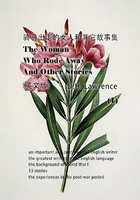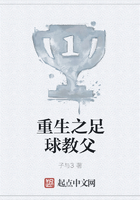Dream It Simple,
Say It Strong
To serve the poorest of the poor…
MOTHER TERESA
THE POWER OF DREAMS has led humans to accomplish great things. Gandhi dreamed of freedom through peace. Martin Luther King, Jr. dreamed of racial equality. Terry Fox dreamed of a cure for cancer. They didn't all have special privileges growing up, but somehow they all gained the self-confidence to dare and turn their dreams into their life missions.
Mother Teresa is one of those humans who had a simple dream that profoundly changed our world. Her dream was helping the poorest of the poor. She began with that vision, then developed a clear plan for making it come true.
Everything Mother Teresa did in her life stemmed from defining her vision and aligning and rallying all of her resources and supporters to her goal. The sisters knew what the Missionaries of Charity stood for, the poor who were served knew what the Missionaries of Charity stood for, and the world at large knew what the Missionaries of Charity stood for, whether it agreed with the vision or not.
Mother Teresa's Path
In 1928, an eighteen-year-old Albanian girl who was passionate about God joined the convent of the Sisters of Loreto. The order sent her to Calcutta to teach at a Catholic school for girls, and Calcutta introduced her to abject poverty.
Living that experience every day gave her insight into a group of people that were forgotten. She learned to understand their needs. She wanted to help the destitute and rejected, but her experience allowed her to refine where and how the help was most needed and could have the most effect. She realized over time that her true purpose was not to help at a broad level, but to help a very specific group of people who could not help themselves and whom others forgot about.
In 1946, Mother Teresa heard these important insights as a direct call from God. She realized that she needed not only to change her own path in life, but to form a separate congregation that focused on helping the destitute. She could not accomplish her vision while staying with the Sisters of Loreto. Thus, in what she described as a more difficult sacrifice than leaving her family to join the convent, she made the decision to bid farewell to that second family, which she had loved dearly for over twenty years, and asked the pope for special permission to start a new religious order called the Missionaries of Charity.
The founding of a new order was not easy and took four years from the time she received her vision. Moreover, when Mother Teresa left the Sisters of Loreto, she had only five hundred rupees in her pocket. But she was not going to let either bureaucracy or finances get in her way. She recruited twelve nuns to join her, and together they opened a school in the slums of Calcutta in 1948. They spent the next three years managing, learning, and growing their little school to capacity. In October 1950, the Vatican gave Mother Teresa permission to start her own order. Its mission, in Mother Teresa's own words, was to care for “the hungry, the naked, the homeless, the crippled, the blind, the lepers, all those people who feel unwanted, unloved, uncared for throughout society, people that have become a burden to the society and are shunned by everyone.”[2]
The sisters saw the direct impact their work had on children and diligently embarked on a growth trajectory to broaden that impact. They first expanded locally in Calcutta. Their first hospice was an abandoned Hindu temple named Kalighat Home for the Dying, later renamed Nirmal Hriday (Pure Heart), a free hospice for the poor. Soon they opened a home for lepers, Shanti Nagar (City of Peace). Ten years after their founding, the Missionaries of Charity had established homes for lepers, orphanages, and hospices throughout India.[3]
In 1965, Mother Teresa asked Pope Paul VI to allow her order to expand into other countries. Permission was granted, and the order opened its first house outside of India, in Venezuela. Others followed in Rome, in Tanzania, and eventually throughout Africa, Asia, and Europe. At the time of Mother Teresa's death, forty-seven years after she started the order, she was operating 594 missions in more than one hundred countries, with over one million coworkers.[4] She was a PR magnet and had raised and deployed billions of dollars in capital. Her human impact and track record are unsurpassed to this day.
Mother Teresa's vision timelessly lives on. She became the vision and an iconic symbol of service to the poor. It took her twenty years to realize the beginning of her dream, then a lifetime to achieve it and let the world hear it—simple, loud, and clear.
Vision
Great business leaders, like Mother Teresa, start with a simple vision they can evangelize internally and externally. Simplicity and strength of message are essential. The vision needs to be set up early, even before you start your company. Mother Teresa had the vision of serving the poorest of the poor before she founded the Missionaries of Charity. Her personal vision became the vision for the organization.
Your vision comes from your lived experiences and beliefs. Twenty years of exposure to poverty taught Mother Teresa the importance of serving the underserved in particular ways. Can you imagine the young Bill Gates setting up an organization like the one Mother Teresa did? It would have been terribly difficult because Bill Gates did not have her direct understanding of poverty. However, he was at the right spot to start a company in what he did understand that grew 30 percent yearly for over two decades; then he donated much of his wealth.
As a leader you should ask yourself, “What are you a Mother Teresa of?” A simple vision can create the momentum to build or move mountains, as Mother Teresa did.
To identify a personal vision requires introspection. We need to listen to ourselves, determine by our actions what we value, and take the time to understand who we truly are or what we are trying to be. Once we understand our core values, the key is to distill those values into a simple vision.
Dreaming It Simple
Simplicity makes a vision powerful. Mother Teresa was crystal clear about where she would focus her organization's resources: at the lowest level of the poverty pyramid. We all have roles to play in the world, as individuals and in our organizations. A person's world may be focused on family, community, work, or a cause. Once you understand personally what your role is, you can begin creating the road map to align all aspects of your efforts.
“Simple,” however, does not mean “oversimplified.” When crafting the visions for their organizations, many leaders go through a lengthy, collaborative process. The result can be a “kitchen sink vision” that tries to address current management buzzwords but does not reflect the true core of the company. We have all seen examples like these:
Our people are our greatest asset.
Our goal is quality.
We deliver world-class service.
These generic “visions” are not specific enough to be actionable or attainable in our lives or by our organizations. The words have no real meaning. With a simple vision, each word matters.
Saying It Strong
“Saying it strong” speaks to the constant need for a leader to consistently speak with passion and conviction about her vision for her organization. She also must act in ways aligned with that vision. A well-articulated vision cannot realize its transformational potential if it is left in a corporate planning binder on the CEO's shelf, never seeing the light of day until the next year's planning process, if then.
The Missionaries of Charity were there to serve the poorest of the poor, and they lived their lives in the simple manner of those they served. Mother Teresa understood her customer, and this was reflected in everything she did: her simple attire of a white sari with three blue stripes, reflecting her vows of chastity, poverty, and obedience; her simple living quarters; and her even simpler way of life. She lived the values she preached. This alignment between vision and action enabled people to believe in her and gave her the authenticity to support the worldwide growth of the Missionaries of Charity.
RUMA'S STORY: When I first met Mother Teresa, she was already famous throughout the world. Whether you were from New York City, a village in Brazil, or the countryside in Cambodia, you knew who Mother Teresa was. Yet the simplicity of her conduct stood out immediately. The moment you met her, you knew this was a visionary who was living to serve the poor. Her environment, her clothing, her language, her demeanor all said, “I am serving the poorest of the poor.” The message was simple, loud, and clear.
Mother Teresa did not have to use a lengthy or formal process to roll out her vision to the Missionaries of Charity. She simply led by example, living a life consistent with her vision. By living what she believed, she inspired others to follow her. She articulated a vision for her organization, then talked about it and acted on it every possible moment. In other words, she dreamed it simple and said it strong!
LOU'S STORY: The year 2001 was tumultuous for technology companies in the United States, and many companies and founders were left with shattered dreams and empty bank accounts. The software company of which I was the president was no exception. Although we managed to survive, times were tough. One Monday, the CEO informed me she was leaving. The board of directors immediately asked me to become the interim CEO while they searched for a replacement. I knew this would not be an easy task. The company had to be united and focused on a common vision for its future in order to weather the storm. To do this right and get everyone aligned, I created a team of people who were well respected within the organization. The team members listened to and discussed and debated with other people in the company as well as each other.
As the leader of the organization, however, I did not abdicate ultimate responsibility for the vision. The leader needs to put a process in place and then stay involved, providing guidance and keeping the process on track to achieve the established goals. The team's initial suggestions were too vague and didn't reflect that the company wanted to achieve specific results. Because this was a for-profit company, its long-term viability and success would be functions, in large part, of its financial results. I needed to keep that idea in front of everyone in the organization. Consequently, I directed the team to think about how to best incorporate that focus into the corporate values. This collaborative process resulted in a vision statement and a set of values that embraced the collective voice.
The team's work was rolled out to the entire organization at a company-wide meeting, followed by additional smaller meetings. There was, as expected, initial skepticism. Previous efforts to develop a lasting vision had failed. We have all seen this before in companies: the “vision of the month.” We avoided this as well as the kitchen sink vision by actively engaging people in creating the vision and by testing it at every stage. Finally, to address the skepticism, we needed to build the vision and values into how we ran the company.
As the CEO, I incorporated the new vision into my daily routine and began to emphasize its core messages, both internally in meetings with the executive team, lunch meetings with employees, and new-employee orientations, and externally with customers and prospects. It became part of how I did my job every day. Over time, the buy-in spread through the company and became part of the culture as more and more stakeholders began to live the values daily, just as they had witnessed their leader do.
Leadership
You as the leader have the ultimate responsibility to determine the purpose and vision of your organization. What is your vision? Can you state it clearly? Is it simple? Do you believe in it? Do you live it? Does it motivate you every day? Has your organization incorporated it into the way it works?
As a leader, you are the voice of the vision. You must continually seek out opportunities to seamlessly weave your vision into your daily routine, such as meetings with customers or employees. You must keep the vision front and center and use it as a touchstone against which you and everyone else in the organization make decisions, large and small. This real-world application gives visibility to your vision and makes it real for everyone in the organization. It can transform it from words on the wall (we have all seen these posters on company walls) to words in the heart of everyone in the organization.
Your ability to act in ways clearly aligned with the organization's vision will accelerate its adoption by everyone in the organization. It also will provide a model of behavior that people can use as they do their work every day. The accretive power of a shared vision with organizational alignment will yield measurable results.
Mother Teresa first articulated her vision “to serve the poorest of the poor” for the Missionaries of Charity nearly sixty years ago. It has the strength of passion radiating from seven simple words. It is aspirational. The results speak for themselves. The Missionaries of Charity today is an iconic global organization with operations in 134 countries on five continents. Its enduring power is a function of the simplicity and strength of its vision. Dreamed simple, said strong!
THE TERESA PRINCIPLES
Dream It Simple, Say It Strong
? Dare to dream
? Be passionate about what you seek to be and achieve
? Articulate a clear, simple vision for yourself or your organization
? Demonstrate both the vision and the values in all that you do















